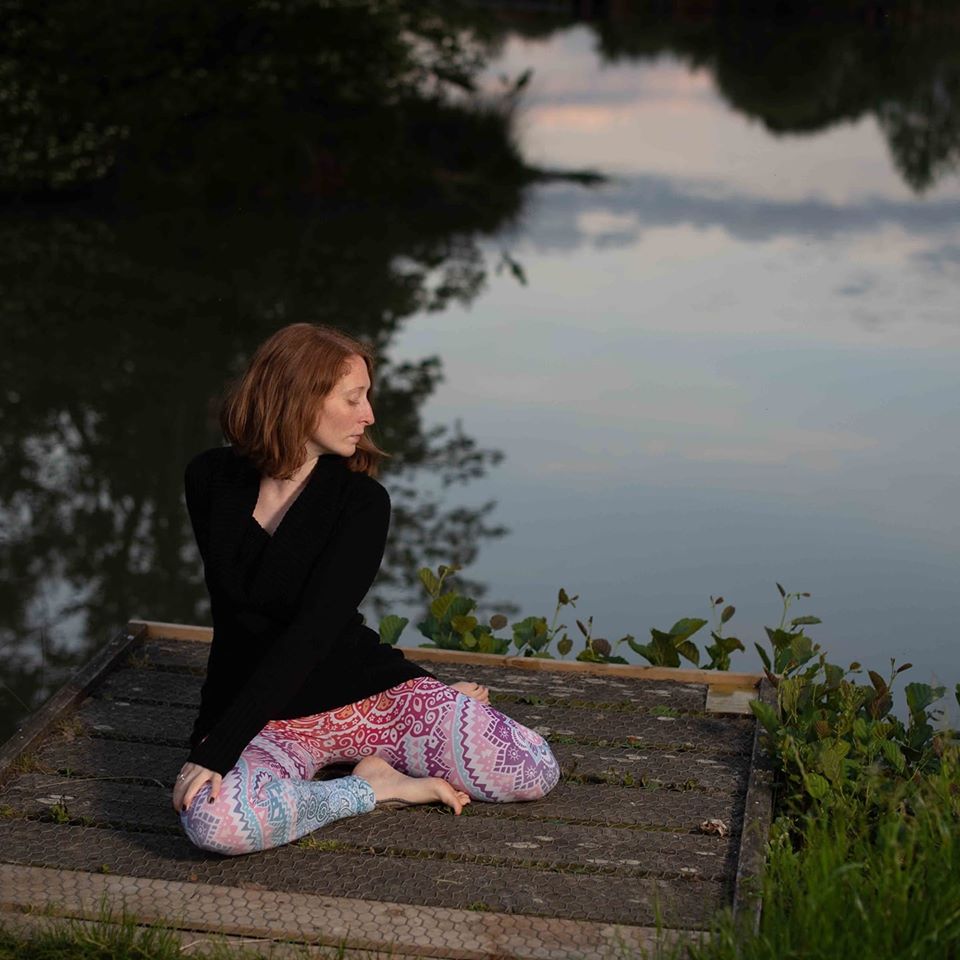
Beginning a yoga practice is a great way to relax, improve your flexibility and calm your mind – particularly during these difficult times. How do you get started though, particularly when you can't attend a class in person?
To help you along the way, we spoke to Kat Bayly – owner and instructor at Kalindi Yoga. Below, she explains the benefits of starting a yoga practice and what you need to know before you begin, before taking you through a series of beginner-friendly poses that will help improve your posture and relieve stress.
Finally, we've recommended some useful tech that can help you make yoga a regular part of your day. It's not essential (and Bayly explains everything you need to know about more fundamental equipment), but it can help you track your progress and even give you live feedback on your poses.
Let's get started with Kat Bayly's advice...
The benefits of yoga
In this global pandemic, many people are experiencing stress and anxiety and for some, these emotions can feel overwhelming. Having a daily yoga routine that you can practice at home can help relieve stress and anxiety.
Yoga works by dropping us into our parasympathetic nervous system (PNS). This is our rest and digest function. Stress and anxiety place us in the sympathetic nervous system (SNS). This is our fight or flight response.
When we are in this response, we have increased levels of cortisol and adrenaline pumping through our body. These increased levels of cortisol and adrenaline have a huge impact on the body if experienced long term. If our hormones are out of balance, it can lead to illness.
Get daily insight, inspiration and deals in your inbox
Sign up for breaking news, reviews, opinion, top tech deals, and more.
Therefore, we want to access our PNS as much as possible so our body can bring itself back into balance and we can stay healthy. Yoga gives us access to the PNS and helps to rebalance the bodily systems. If our body feels good, our mind follows.
What you'll need
If you’re new to yoga it’s a good idea to order a yoga mat, blocks or bricks and a yoga belt. There are lots to choose from so you may need to do a bit of research before buying. A thinner mat works better for standing balances. I would advise against using a Pilates mat as these tend to be too thick for standing postures. If you do require any padding under your knees when kneeling or on all fours, you can always use a blanket.
Make sure you wear clothing that is comfortable and stretchy, such as gym clothes. You also want to make sure you are going to be warm enough but not too warm. You can work up a sweat during a yoga class! You may also want a blanket nearby to use as a prop or to cover yourself with when you relax at the end.
Joining a live online class
Since the pandemic, yoga teachers have reverted to holding live online classes. These work similarly to group classes but you’ll need to set up a space in your home. Choose a part of a room that is clutter free. Ensure you have enough room around you to stretch your arms up and out to the sides without touching anything.
I tend to use props a lot during my classes so it’s a good idea to have them next to you at the start of the class. This way you don’t need to disappear and search for them during the session.
You’ll be asked to complete a brief health questionnaire before attending a class with me. Once completed, you will be sent the link to the Zoom meeting prior to the class time. It’s advisable to join 10 minutes before the start to ensure you’re visible on the webcam.
During the live online class, I will be practising with you to demonstrate the postures but I will also keep an eye on each individual to ensure they are safe. No one else can hear you when you practice as all participants will be muted and no one else is going to be watching you either! As I cannot be physically in the room with you, you are required to listen to your body carefully and if something doesn’t feel right, take the variation offered or sit it out.
Anything else I should know?
Body// Yoga looks easy but some of the postures are tricky. Use props whenever you need to make the postures accessible to you. Remember, yoga is there to reduce our stress levels so don’t force the body into something it isn’t ready for. This will only stress your body out more. Approach your first class with an open mind, you may be surprised at what comes up for you. The more you practice, the more you will experience the benefits so try and make this a daily routine. You could tag the stretches onto the end of your run, for example.
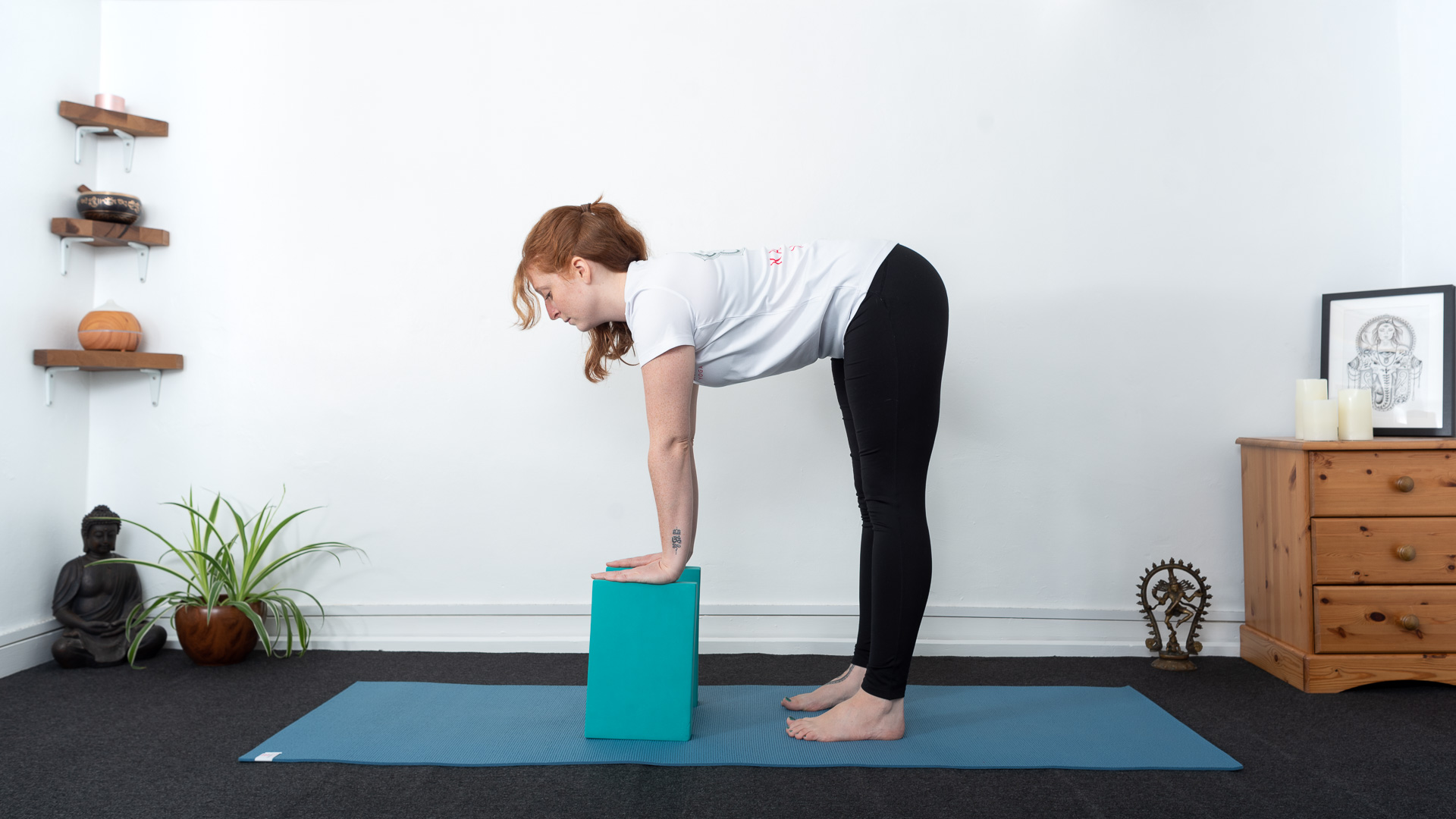
1. Open the backs of your legs
Standing with your feet hip distance, place your blocks in front of you, shoulder distance apart. Bring your hands to the blocks making sure your wrists are stacked under your shoulders. Lengthen your chest forward and shoulders away from the ears. Take as much height under the hands as you need to keep the legs straight. Hold for a minute, breathing deeply.
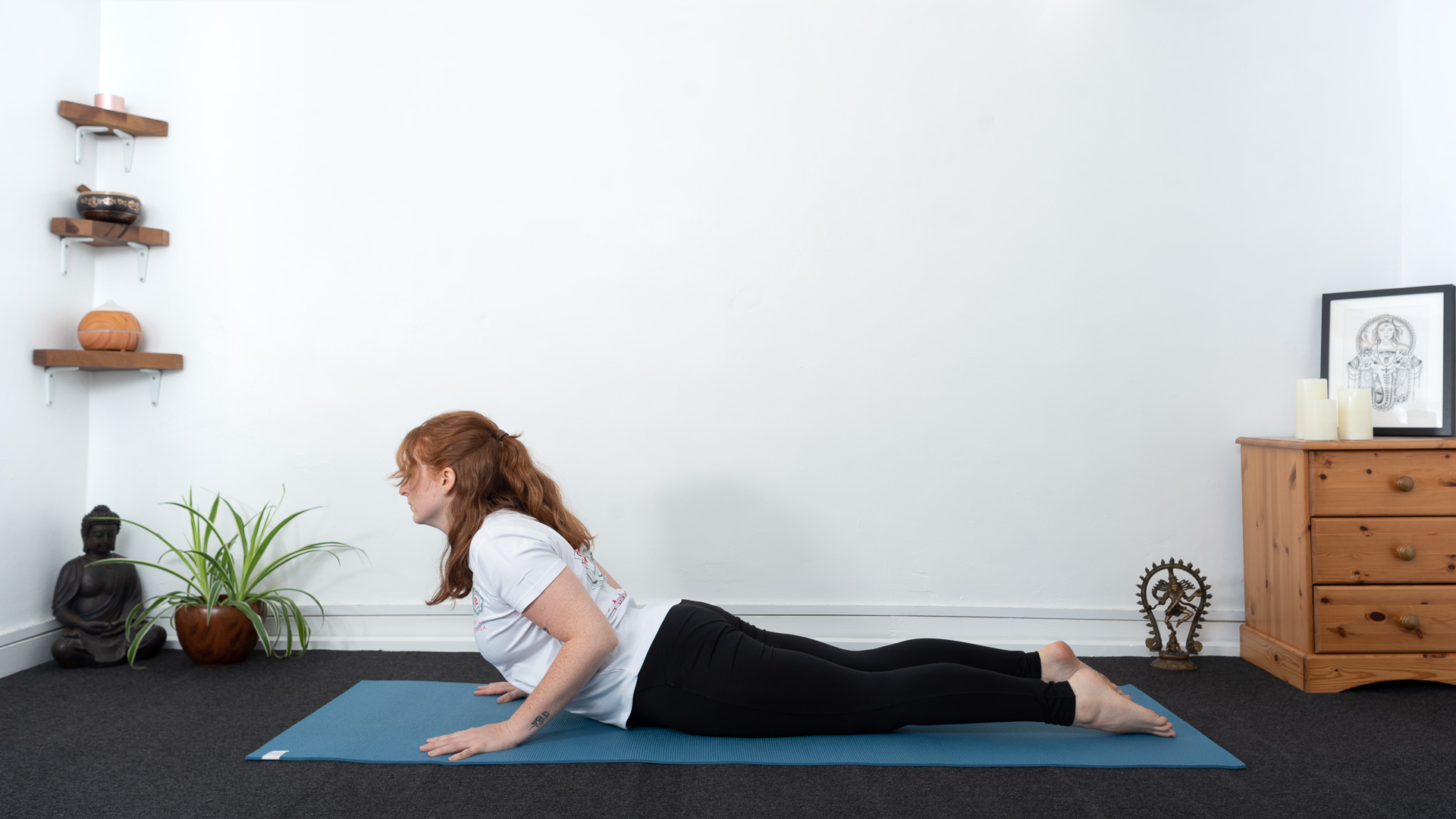
2. Create space in your chest and shoulders
Lying on your abdomen, bring your hands either side of your chest, elbows off the floor. You can turn your fingers out slightly to help bring your elbows into the back ribs. Press into the tops of your feet, lift your knees off the floor, lift your pubic bone up and lower belly in. Press gently into your hands and lift your chest forward and up. Take a couple of deep breaths and come down.
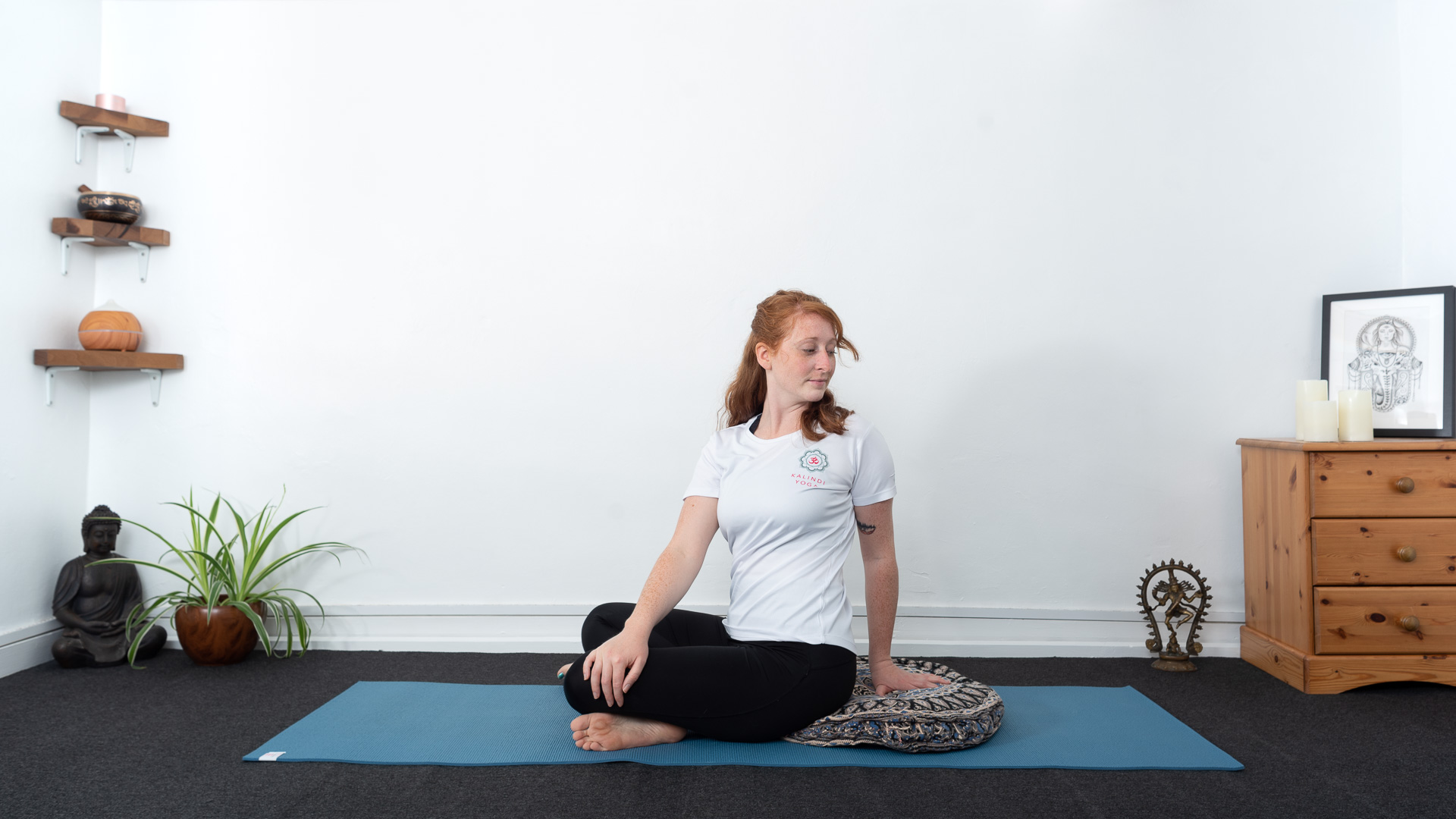
3. Take a gentle twist
Sitting in a cross legged position, cross your shins with your ankles under your knees. This means your feet need to be further away from the hips than you might normally sit if cross legged. If your knees are high, sit onto the edge of a cushion or a yoga block. This will help to relieve the hips and knees down towards the floor. Take as much height underneath the buttocks as you need to make this comfortable for you. Bring your left hand behind you, right hand onto your left thigh or knee and twist to the left side. Take a few breaths and then repeat, twisting to the right.
4. Rest in extended child's pose
Come to an all fours position, bringing your big toes together and keeping your knees apart. Sink your buttocks back towards your heels. If your buttocks don’t connect with your heels, place a cushion or block underneath your thighs. Stretch your arms forward and come onto your fingertips. Move your shoulder blades down the back. Your forehead may reach the floor but if not, support it with blankets or a block to ensure your neck stays relaxed. Take a few minutes here then bring yourself up.
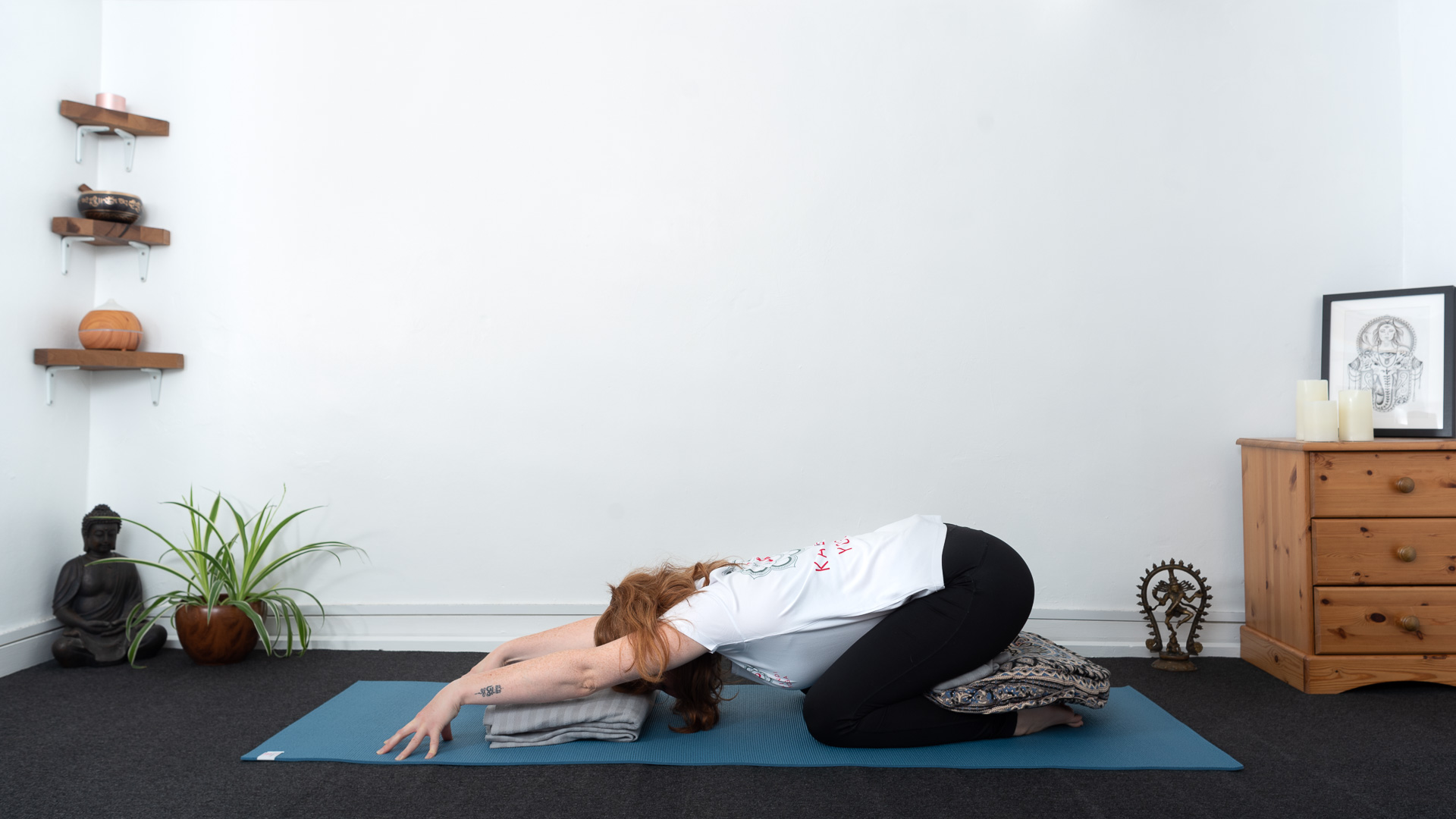
Tech for yoga
As Kat Bayly has explained, you need very little equipment to begin a yoga practice, but there is some technology that can make it easier to get started.
If you're taking part in an online yoga class, you'll need a webcam so the instructor can watch and make sure you're safe. Our preferred webcam is the Logitech StreamCam thanks to its electronic image stabilization and facial tracking (great for keeping the image steady and focused while you move), plus smart exposure and 1080p resolution.
If the Logitech StreamCam is a little beyond your price range, the Microsoft LifeCam HD-3000 also comes highly recommended. Again, it features auto-focus to ensure you're clearly visible to your instructor, and it can be mounted on a tripod if it's not convenient to have it clipped to your laptop. The exposure shifts dynamically to suit changing lighting conditions, too. For more options, check out our full guide to the best webcams.
Fitness trackers are mainly designed for aerobic activities like cycling, running, walking and swimming, and can't give too much help when it comes to yoga (indeed, they could be a distraction). However, if you're participating in a particularly intense session, you might be interested to see a record of your heart rate, and an estimate of how many calories were burned during the session.
You don't need an expensive smartwatch for this, and a basic activity band will do the job perfectly well. The Honor Band 5 is one of the most affordable fitness trackers available today, and offers both activity and sleep tracking, with a maximum battery life of 14 days with light use.
The Xiaomi Mi Band 4 is another good choice that's super affordable. It's not the best looking fitness tracker, but can track your heart rate throughout your yoga practice and can last up to a month between charges.
Interested in something a little more high-tech? Yoganotch is a 'smart yoga' system that uses a set of sensors on your body to provide live feedback and advice as you move through a yoga class, helping you stay safe and improve your posture. The sensors clip onto elasticated straps or your clothing, creating a 3D visualization of your body.
If you need to make any corrections, an audio instruction will advise you what to do, and let you know when you've got it right. The Yoganotch app is only available for iOS so far, but an Android version is in the works.
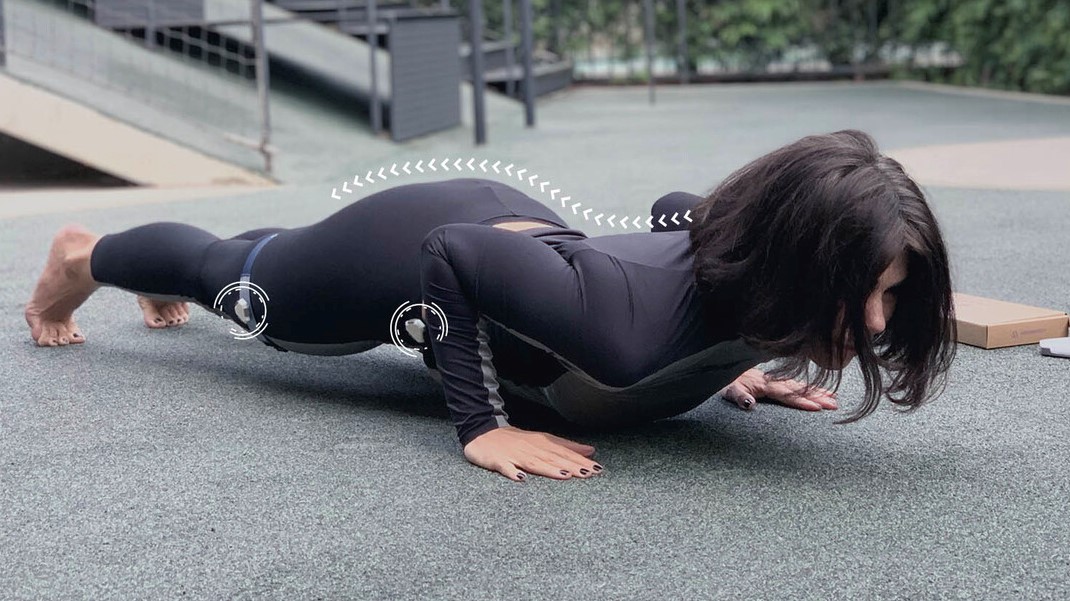
The Yoganotch set (including motion sensors with a charging stand, wearable straps, a phone stand and everything else necessary to get started) is available for a discounted price of $199 (about £150, AU$300) when you use the voucher code launch.
- Check out our guides to the best treadmill deals and exercise bike deals
Katherine Bayly is a health and wellbeing writer for various online publications at T3, TechRadar and FitandWell. She started her own business, Kalindi Yoga, teaching yoga in Frome and Bristol. Katherine teaches Hatha Yoga in the Sivananda tradition and her classes are for all levels and abilities. The class structure is; chanting, pranayama (breathing exercises), flowing sequence of asanas (postures) and guided relaxation to close.
